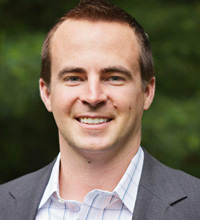Times of generational transition are often rife with conflict, which, if not managed adeptly, can end disastrously. In many cases, that conflict can be resolved with the typical tools of the family business advisory trade, such as succession planning, improved governance, and better communication. In some situations, however, the conflict is actually the result of a more basic problem: a mismatch between the inherited ownership structure and the ownership structure that works best for the next generation.
Even the most savvy and sophisticated business leaders and advisors often give less than adequate thought to how the business should be owned in the future. Indeed, owners typically stick to the status quo during periods of transition. The current ownership form is often deeply rooted in the family’s identity and reinforces a belief that it is just how we do things around here. Ownership decisions are also understandably driven by the tax consequences, with less attention paid to how they will affect the next generation’s ability to work together.
But a focus on the form of ownership is sometimes exactly what is needed. Family businesses are often thought of as essentially the same, when in fact there are fundamentally different types (for more on this point, please see the September 16 issue of Harvard Business Review. Rather than remaining locked into financial and emotional battles caused by the status quo, family businesses can choose instead to transform the ownership model to something that better suits the interests of owners and allows the enterprise to thrive in times of change.
A case as an example
We worked with one business family, for example, that owned and operated an investment company (all identifying details have been changed). The two siblings, a brother and a sister, each had a 50/50 stake in the business and formed a true partnership. They each held senior roles in the business and contributed more or less equally to its success. Even outside the business, the siblings shared everything jointly and equally – from bank accounts to vacation homes. Together they were incredibly successful.
The siblings passed away in their late 80s and bequeathed the company to their adult children. Those children included five cousins. The sister had two daughters and a son; the brother had two daughters. The eldest daughter in each branch, well-educated and mature, assumed the leadership role of her respective parent. Meanwhile, the other three pursued careers outside the business. Ownership was transferred to them through two branch trusts, though their trusts were set up in a way that required both branches to agree on major decisions, just as their parents had done. The trusts owned an integrated pool of assets, which included operating businesses, real estate holdings, hedge funds, and passive investments.
At the beginning of the transition, the cousins tried to emulate the partnership model of their parents. They attempted to meet on a regular basis to make decisions about their portfolio. They also shared the profits evenly, just as they had been taught. But several problems soon emerged.
For one, enormous tensions arose around decision-making. The eldest daughters copied their parents and made all major decisions, essentially presenting a fait accompli at the meetings. This irritated the other three members of the family, who expected to be treated as full partners.
Another issue was that the daughters in leadership roles grew frustrated that everyone received an equal share of the company’s profits, despite the fact that their intensity of work and responsibilities were far greater.
Finally, there was no alignment on investment strategy. Those outside the investment company sought distributions to fund their lifestyles, while those in the business saw big opportunities for growth in front of them and wanted to reinvest as much as possible in the company. And while some were happy with the current asset allocation – which was largely a carryover from what their parents had created – others wanted to make investments in new asset classes.
Because consensus was needed under the partnership model, the family found it increasingly difficult to make decisions together. They started to make fewer collective investments because they were only able to agree on those that met the lowest common denominator threshold of interests. Over time, the cousins formed alliances among themselves and divided into separate camps. Eventually communication broke down and a serious conflict broke out. Some wanted to stay in the partnership while others demanded to be bought out at unrealistic prices.
When we met them, relationships were frayed and the enterprise was stuck in limbo. Working on a family constitution and communication helped, but it was only a band-aid. In order to move forward, this generation had to move past the ownership model that it had inherited from the parents. The basic rule of a partnership is “all for one and one for all.” It works best when everyone contributes more or less equally, and when there is alignment among the partners about what they want from the business. Neither of those was true anymore for this family.
A new ownership model
Instead, they needed an ownership model that was flexible enough to allow them to gain the benefits of shared ownership where they agreed, but to also accommodate the basic differences in their preferences. We helped them move towards what we call a “nested” model, where assets are owned in different configurations. Instead of one family ownership group, there are multiple – one inside another, like a Russian doll.
To implement this structure required four main changes:
- First, the owners had to change how their assets were structured. Their attorney helped them transition from the interlocking branch trusts to five individual trusts to eliminate the need for consensus on every matter of significance. As a result, each person could ultimately “vote with their feet” and withdraw their shares if the family enterprise did not serve their interests.
- Second, they needed to differentiate between the role of owners (all five of them) and that of the investment managers (the two active daughters). We helped them establish an Owner Council and an Investment Committee, and developed a matrix that defined the role of both groups in making key decisions.
- Third, the owners needed to divide their assets into “buckets” from which they could choose to invest, so that participation in the enterprise was no longer an all-or-nothing decision. We worked with them to establish separate funds based on their four different types of holdings and created rules by which each person could opt-in or opt-out of each one.
- Finally, the owners had to establish a more formal infrastructure to oversee and administer their portfolio, one that had more transparency about the costs of running the enterprise. We helped them to define the basic rules and, most importantly, a mutually-acceptable compensation plan for the two daughters who dedicated their time to manage the portfolio.
These changes allowed the business to regain its vitality and the owners to start recovering their family relationships. They operated their enterprise differently from their parents, but were able to accomplish the same basic goal of working together to achieve something much greater than they could do alone.
We share this story because it illustrates very clearly the problem that exists when there is a mismatch between an ownership structure and the needs of the owners, as well as the positive impact that a transformation can have on the overall family enterprise.
The story also points to a transformation that we hope to see in our field. Family business advisors have tended to stay away from the structuring of ownership, largely leaving it to trust and estate attorneys, whose charge from their clients is usually to minimize taxes. Our hope is that there will be greater understanding that the way people own their enterprise has profound implications for its ability to be successful across generations. That points to an ever-greater need for collaboration between trust, estate, and tax experts and family business advisors. Working together, we can help our clients to unleash the power of family ownership.
About the contributors
 Dr. Josh Baron is a co-founder and partner at BanyanGlobal. For the last decade, he has worked closely with families who own assets together, such as operating companies, family foundations, and family offices. Josh can be reached at jbaron@banyan.global.
Dr. Josh Baron is a co-founder and partner at BanyanGlobal. For the last decade, he has worked closely with families who own assets together, such as operating companies, family foundations, and family offices. Josh can be reached at jbaron@banyan.global.
 Nick Di Loreto is a senior advisor at BanyanGlobal. He has counseled client families in North America, Asia, Europe, and the Middle East on governance and business strategy issues. Nick can be reached at ndiloreto@banyan.global.
Nick Di Loreto is a senior advisor at BanyanGlobal. He has counseled client families in North America, Asia, Europe, and the Middle East on governance and business strategy issues. Nick can be reached at ndiloreto@banyan.global.





